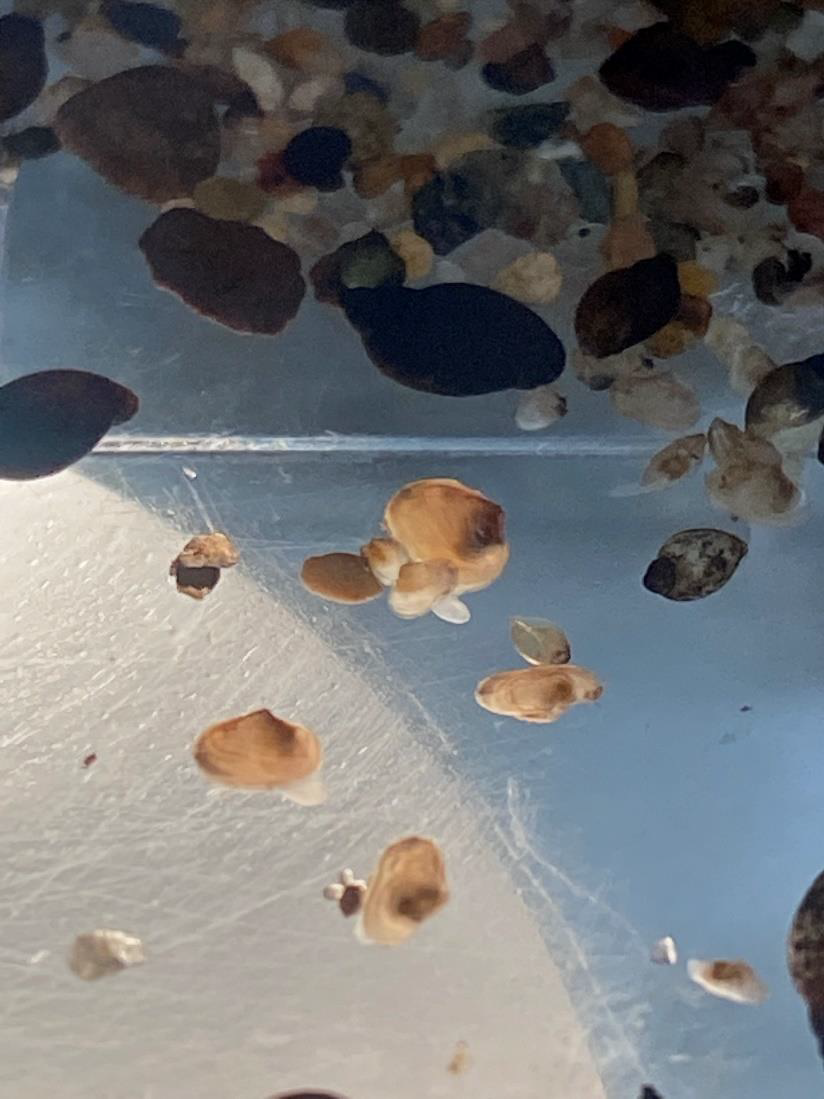2021 was an average year for Mississippi River flows, but after the past few years of high-water flows seemed low. This was especially true in the slough at Blackhawk Park where our Mobile Aquatic Rearing System trailer spends its summer. There were several periods where flows were so low that there wasn’t much, or any, fresh water flowing into the slough from the river and water quality declined several times. As mussels get larger, they’re more resilient to stress because they can stay closed longer, and we saw evidence of this in the Mobile Aquatic Rearing System this year, with greater than 90% survival for our two-year-old and older animals. Survival is always much lower for newly transformed juveniles, and some species had no juveniles survive this summer. Fortunately, we successfully produced many Higgins Eye this year and despite poor survival overall, we collected more than 10,000 juveniles from the trailer in October. These will hopefully continue to grow and survive to be stocked into the Chippewa to continue our reintroduction efforts there.
By: Megan Bradley

Nine, 2-5 millimeter Higgins Eye mussels crawl around in a petri dish during recovery from the Mobile Aquatic Rearing System (MARS trailer). These animals are still tiny and therefore translucent enough that you can see their dark guts while they crawl around seeking different habitats (flow, food and stable sediment). Photo: Megan Bradley/USFWS.
